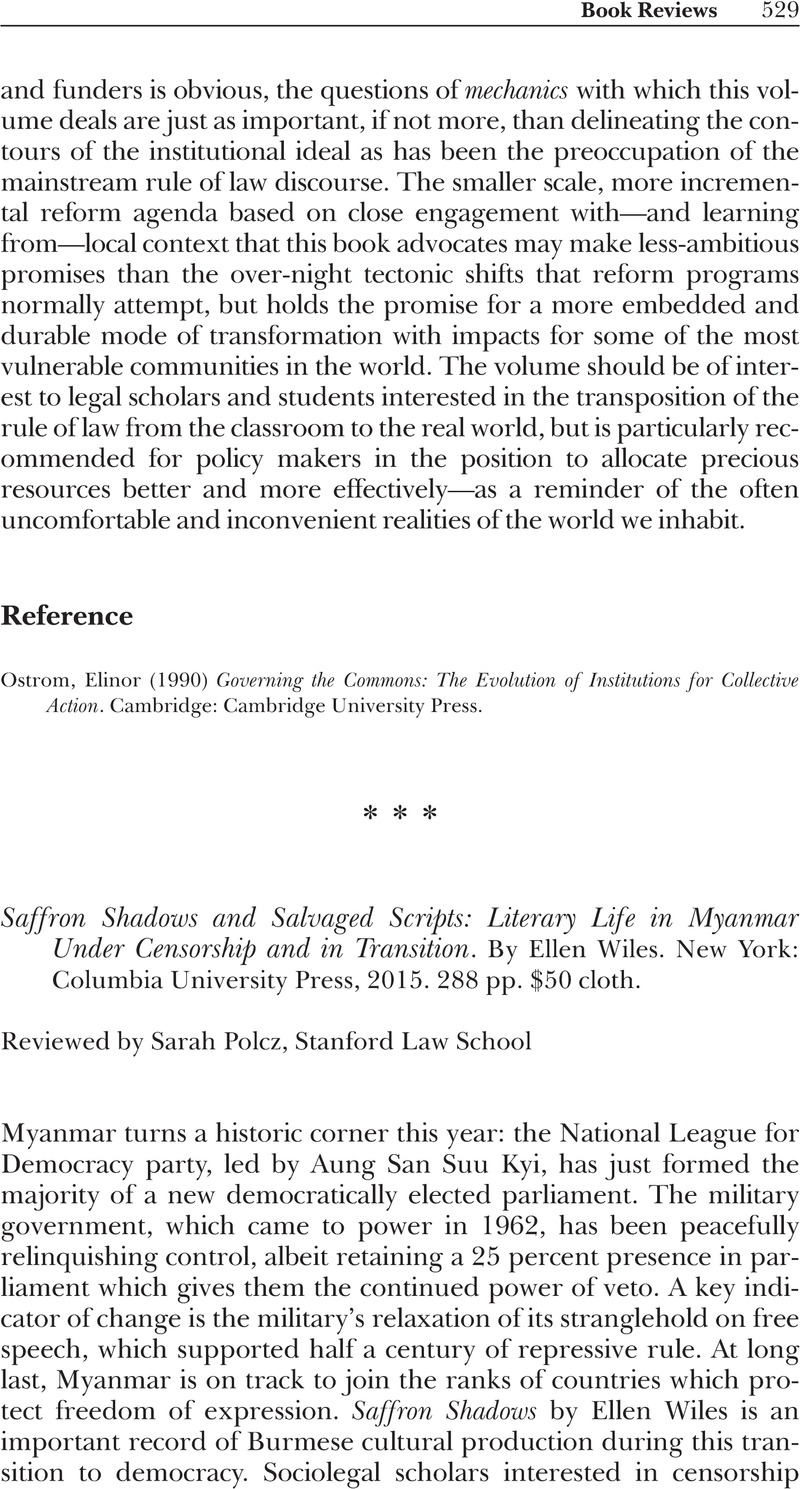No CrossRef data available.
Article contents
Saffron Shadows and Salvaged Scripts: Literary Life in Myanmar Under Censorship and in Transition. By Ellen Wiles. New York: Columbia University Press, 2015. 288 pp. $50 cloth.
Review products
Saffron Shadows and Salvaged Scripts: Literary Life in Myanmar Under Censorship and in Transition. By Ellen Wiles. New York: Columbia University Press, 2015. 288 pp. $50 cloth.
Published online by Cambridge University Press: 01 January 2024
Abstract
An abstract is not available for this content so a preview has been provided. Please use the Get access link above for information on how to access this content.

- Type
- Book Reviews
- Information
- Copyright
- © 2016 Law and Society Association.


